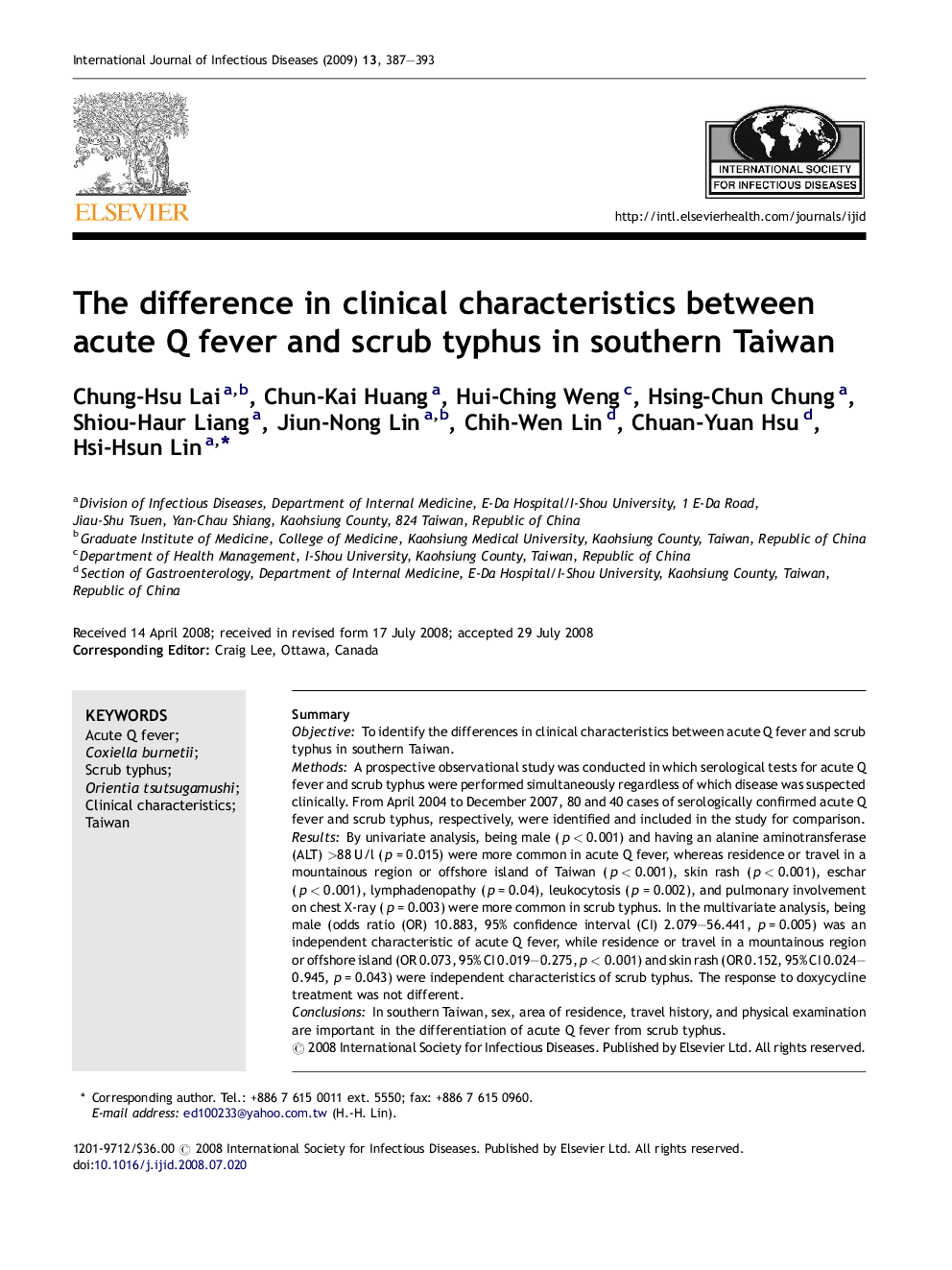| Article ID | Journal | Published Year | Pages | File Type |
|---|---|---|---|---|
| 3364471 | International Journal of Infectious Diseases | 2009 | 7 Pages |
SummaryObjectiveTo identify the differences in clinical characteristics between acute Q fever and scrub typhus in southern Taiwan.MethodsA prospective observational study was conducted in which serological tests for acute Q fever and scrub typhus were performed simultaneously regardless of which disease was suspected clinically. From April 2004 to December 2007, 80 and 40 cases of serologically confirmed acute Q fever and scrub typhus, respectively, were identified and included in the study for comparison.ResultsBy univariate analysis, being male (p < 0.001) and having an alanine aminotransferase (ALT) >88 U/l (p = 0.015) were more common in acute Q fever, whereas residence or travel in a mountainous region or offshore island of Taiwan (p < 0.001), skin rash (p < 0.001), eschar (p < 0.001), lymphadenopathy (p = 0.04), leukocytosis (p = 0.002), and pulmonary involvement on chest X-ray (p = 0.003) were more common in scrub typhus. In the multivariate analysis, being male (odds ratio (OR) 10.883, 95% confidence interval (CI) 2.079–56.441, p = 0.005) was an independent characteristic of acute Q fever, while residence or travel in a mountainous region or offshore island (OR 0.073, 95% CI 0.019–0.275, p < 0.001) and skin rash (OR 0.152, 95% CI 0.024–0.945, p = 0.043) were independent characteristics of scrub typhus. The response to doxycycline treatment was not different.ConclusionsIn southern Taiwan, sex, area of residence, travel history, and physical examination are important in the differentiation of acute Q fever from scrub typhus.
